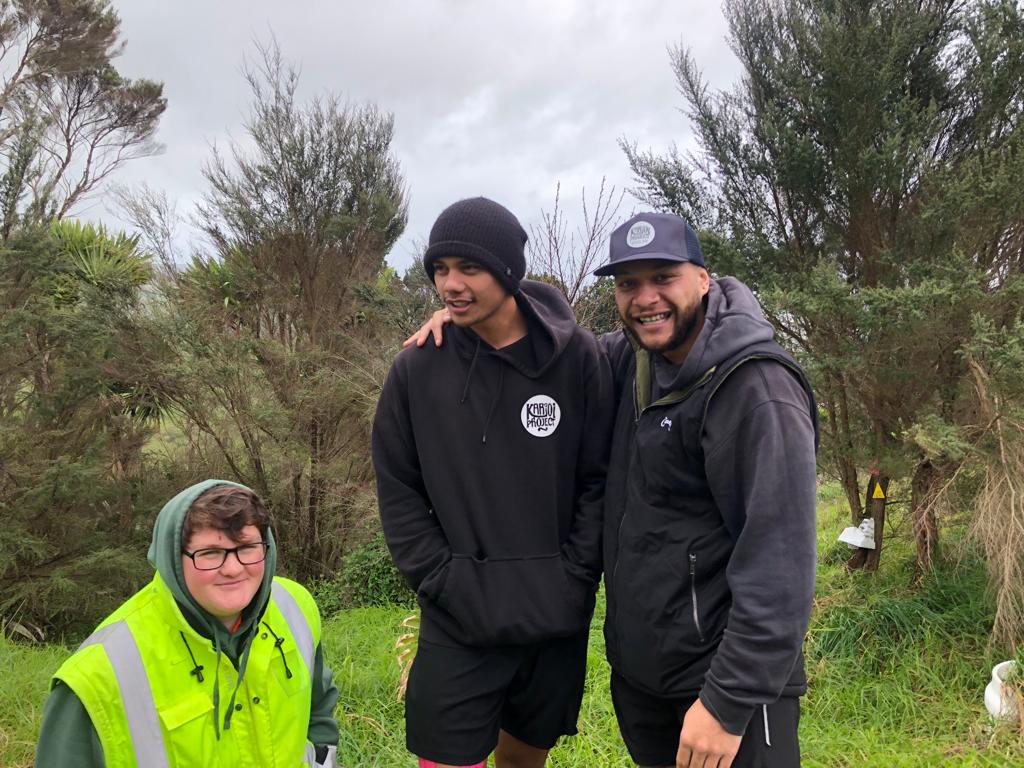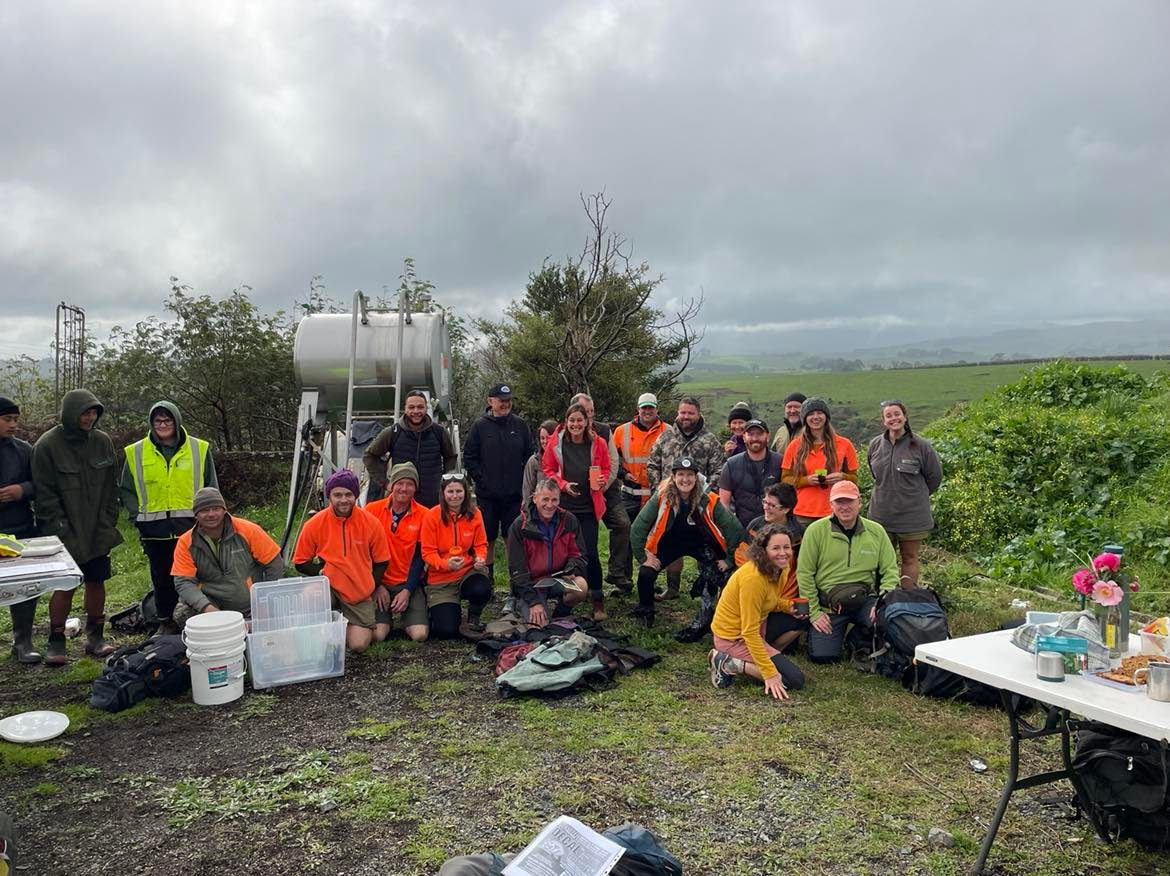Bait station operations at the Karioi Project
The Karioi Project’s dedicated team of biodiversity rangers have cut kilometer after kilometer of tracks across 250 bushy hectares on Karioi maunga and installed 530 bait stations for ground control of predators to target possums, stoats and rats at a landscape scale. The work, funded by Waikato Regional Council and Lottery Environment and Heritage Fund, complements predator control work being done by hapu-led Te Iwi Tahi Pest on 200 hectares in the Wainui catchment, funded by the Department of Conservation.

Karioi Project’s Biodiversity Rangers: Liam Dingle, Dayton Keremeta and Viliami Fakavai
The team began phase one of the project’s large-scale bait station deployment in November 2021 – this covered “nearly half the mountain, which feels like a real achievement,” says ranger Viliami Fakavai. With amazing volunteers supporting the ranger team, one by one, each of these bait stations was carefully filled. To date, we’ve had 8 bait station operations days and just this week in November 2022, the team is up the mountain again with the final part of the operation to de-toxin the bait stations i.e. removing of any poison left over in the bait stations.
Here’s feedback from one of the volunteers who helped with the bait station operation:
“Thanks so much for organising yesterday, I really enjoyed it again. I feel so glad you invited me to be part of the bait box drops. It’s been so eye opening to learn about conservation efforts and I just love being in the bush :). You run it really well with a good balance of emphasis on health and safety and the benefits of being part of the project. It’s so lovely to hear you are making an impact on the pest problem, I can’t wait to see the maunga flourish in years to come!”
Another volunteer shared on social media:
“This week we have had the pleasure of supporting the Karioi Project Raglan, getting amongst nature and giving a little back. Was awesome to help with loading up bait stations, admiring the awesome views up Mt Karioi, meeting epic people, getting up close with some wildlife and burning a few calories! Looking forward to our next mission in the near future.”
Ground based toxin applications such as this could potentially eliminate the need for future aerial applications of 1080 on Karioi, news well-received in the Whāingaroa community. The biggest advantage of a ground based application (over an aerial drop) is that all bait deployed is physically contained, specifically targeting predators, and minimises access by non-targeted species.
One volunteer on a recent bait station deployment commented that he could see the benefit of using targeted toxins because “when a trap has been sprung, there is no remaining control until it is reset, whereas bait will remain active until it is all eaten/becomes unpalatable/is removed.”
Of course, the Karioi Project will continue to use a variety of traps, regularly checked and maintained by 100+ dedicated volunteers. Bait stations now added to the Karioi Project’s tool box should yield even better results for local biodiversity with a target residual catch rate of less than 5%.

Bait station deployment with support from DOC staff.

Bait station de-toxin operation with volunteers in Nov 2022.
